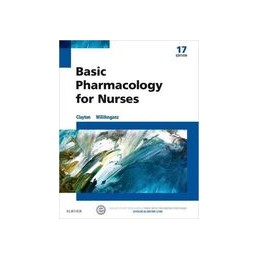- Reduced price

Order to parcel locker

easy pay


 Delivery policy
Delivery policy
Choose Paczkomat Inpost, Orlen Paczka, DHL, DPD or Poczta Polska. Click for more details
 Security policy
Security policy
Pay with a quick bank transfer, payment card or cash on delivery. Click for more details
 Return policy
Return policy
If you are a consumer, you can return the goods within 14 days. Click for more details
Known for its accurate, up-to-date drug content and its practical application of the nursing process to drugs and disorders, Clayton and Willihnganzs Basic Pharmacology for Nurses, 17th Edition prepares you for safe medication administration. Emphasizing the nurses role, clear guidelines cover safe drug handling, types of drugs used for disorders or to affect body systems, injection and enteral administration, and patient education. From a respected PharmD/Nursing author team, this full-color text also provides an excellent review for the pharmacology questions on the NCLEX® examination.
Data sheet
